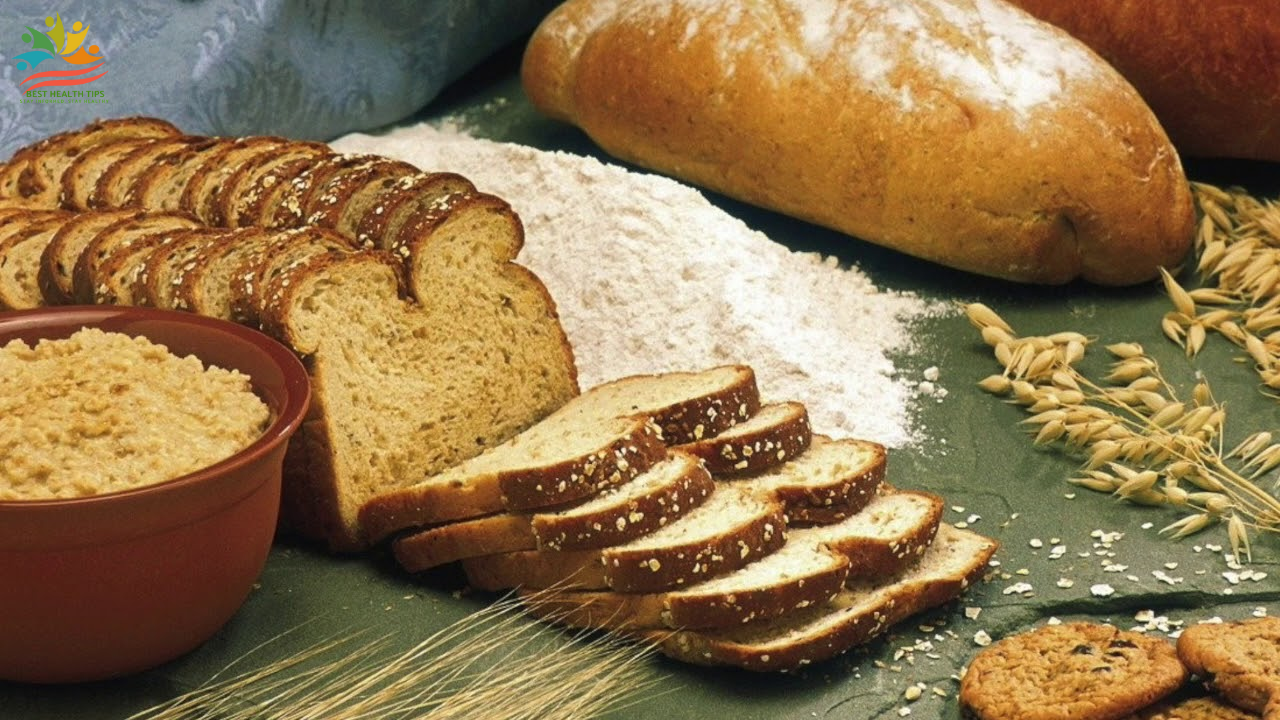Introduction
Bread that is high in fiber refers to fiber that is present in bread.it benefits from whole grains. bran, seeds, and other fiber-rich ingredients. It aids digestion, makes hearts healthy, and controls blood sugar. High-fiber bread has whole wheat, oats, rye, or added fiber sources such as flaxseeds. Have you ever wondered why you feel satisfied by some bread and others literally melt away like wisps of fog? It usually comes down to their fiber intake. It is time that we stepped into the world of highfiber bread and see what makes it your kitchen staple.
What Is HighFiber Bread?
The texture will be denser and heavier than white bread and will have more developed, nutty flavor. While oldfashioned white bread will be light and fluffy, bread with more fiber has more “body” to it – you can certainly sense when you chew, there’s substance.
In terms of appearance, highfiber bread tends to be darker and could have distinguishable grains or seeds. Don’t be deceived by appearance, however – certain companies add caramel coloring to bread so that the bread appears more healthy than it actually is. So, finding the nutrition label for fiber is important. Think of highfiber bread as the healthy alternative to ordinary bread – all the convenience and versatility of regular bread, but with health benefits and endurance that can last you longer.
Where it is “highfiber” may come from a number of sources:
- Whole grains flours (wheat, rye, oats)
- Bran added or other sources of fiber
- Seeds and nuts
- Legume flours
- Ancient grains like quinoa or spelt
Is Bread High in Fiber?
Look to fiber as building blocks of character for your bread. It is obtained from whole grains, seeds, and occasionally supplemented natural fiber sources. You are getting the whole package when you bite into a slice of highfiber bread – bran, germ, and endosperm of the grain.
Health Benefits
how your body is going to love that you have chosen to stick with highfiber bread. It’s your own personal health assistant, all in your own kitchen. The fiber keeps you at an even blood sugar level, keeps you full longer, and is great for your digestive system as well. it’s great for your heart and your weight as well.
Types of HighFiber Bread
Whole Grain Varieties
Whole grain breads are fiber superstars. They use grains that still retain their nutritious layers. It come in many varieties using wheat, rye, oats, and even ancient grains like spelt.
Grain Breads
Consider using grains that just sprouted – that’s what you’ll find used in these specialty breads. Sprouting maximizes nutrients for use and may help the bread to be more easily digested.
Specialty FiberDense Breads
These are the bread turks of the next generation. They’re considering adding other veggies, seeds, or nuts to bread. They’re plain bread that’s been reloaded with a fiberfriendly twist.
Best HighFiber Bread Options
Artisanal Selections
Your neighborhood bakery may have some fiber slipping in. Be sure to inquire about what whole grain bread they carry – those who stick to the old ways are likely to leave the natural fiber content intact of the grain.
Getting Past Fiber Claims
Here’s going undercover as label detectives. Find the amount of fiber readily listed on the nutrition label. Check for bread with a minimum of 35 grams per serving.
Hype vs. Reality
Discover the distinction between genuine highfiber bread and highpressure hype. Have a look at the ingredient list, and whole grains are at the top.
HighFiber Bread in Your Kitchen
Major Ingredients
Up to be the bread baker superstar? Stock your shelves with whole grain flour, seeds, and maybe some wheat bran or other fiber additives.
Success Tips
You need to be a bit more cautious when using highfiber ingredients. The dough will take more liquid, and it will rise longer. Don’t worry.
| Time Period | Event |
|---|---|
| Ancient Times | Early civilizations used whole grains to make bread, retaining natural fiber. |
| Egyptian Era (3000 BC) | Egyptians developed yeast-leavened bread, still using whole grains. |
| Roman Empire (500 BC – 476 AD) | Romans refined milling techniques, reducing fiber content in bread. |
| Medieval Period (5th–15th Century) | Coarse, whole grain bread was common among peasants, while refined white bread was for the wealthy. |
| Industrial Revolution (18th–19th Century) | Advances in milling removed bran and fiber, making bread softer but less nutritious. |
| 20th Century | Awareness of fiber’s health benefits led to the resurgence of whole grain and high-fiber bread. |
| 21st Century | High-fiber, multigrain, and fortified bread gained popularity for health-conscious consumers. |
Conclusion
Not only is highfiber bread healthy – it also tastes wonderful, too. Purchase it or make it yourself, you’re benefiting your body by choosing bread that’s a fiber giant.
FAQs
1. How much fiber per slice must my bread contain?
Look for at least 3 grams of fiber per slice for greatest benefit.
2. Does highfiber bread expire as long as regular bread?
It may possibly be less on the shelf life due to natural ingredients, but proper storing may make it fresher.
3. Do I have to use whole wheat to make highfiber bread?
Yes! Other whole grains can also be replaced like rye, oats, or you could even use seeds and nuts as a substitute for fiber levels.
Read more about Diet and Nutrition and other categories at Best Health Tipss.


